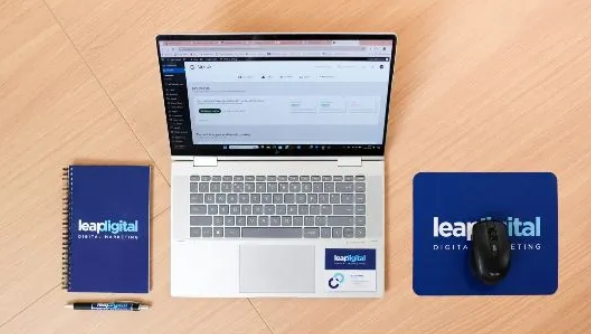In a world where access to healthcare remains uneven, mobile app development companies in Chicago are rising to the challenge by addressing the issue of health deserts. Health deserts—areas where people lack adequate access to primary care or medical facilities—are especially common in rural regions and underserved urban neighborhoods. By leveraging telemedicine apps, developers and healthcare innovators are bridging this critical gap, offering a new lifeline to patients who once had few or no options for medical care.
This article explores how Chicago-based app development companies are using innovative technology to tackle health deserts and the implications of these developments on both local and national levels. We will also discuss the role of software development companies in transforming telehealth, highlight real-world examples, and examine what the future holds.
What Are Health Deserts?
Understanding the Problem
Health deserts refer to geographic areas that lack access to basic healthcare services such as family physicians, urgent care clinics, pharmacies, and hospitals. These are often:
-
Rural communities
-
Low-income urban neighborhoods
-
Areas with low healthcare provider density
People living in these areas often face challenges such as long travel times to the nearest doctor, high out-of-pocket costs, and limited appointment availability.
The Public Health Impact
The consequences are significant:
-
Higher rates of chronic disease
-
Increased emergency room visits
-
Lower life expectancy
-
Delayed diagnoses and treatments
These disparities highlight an urgent need for scalable, cost-effective, and accessible healthcare solutions—something mobile technology can uniquely provide.
The Rise of Telemedicine Apps
A Solution Born Out of Necessity
Telemedicine has gained traction in recent years, especially after the COVID-19 pandemic, which forced the healthcare system to rethink how services are delivered. Mobile telemedicine apps allow patients to consult with doctors remotely via video calls, voice chats, or instant messaging—eliminating the need for physical travel and making medical advice accessible anytime, anywhere.
Core Features of Telemedicine Apps
Modern telehealth apps, often built by mobile app development companies in Chicago, include:
-
Secure video conferencing
-
Electronic health records (EHR) integration
-
Appointment scheduling
-
Prescription delivery services
-
AI-driven symptom checkers
-
Multilingual support
These functionalities enhance user experience while ensuring regulatory compliance and data security.
Why Chicago?
A Tech Hub with a Heart for Health Equity
Chicago is not just a growing tech hub—it’s also a city with deep healthcare roots, home to world-class institutions like Northwestern Medicine, Rush University Medical Center, and the University of Chicago Medical Center. The city’s ecosystem fosters collaboration between hospitals, tech startups, and community organizations.
Government and Academic Partnerships
The city government and local universities are also promoting initiatives that support innovation in healthcare accessibility. This creates a fertile ground for software development companies and app developers to launch impactful solutions aimed at solving real-world challenges.
How Mobile App Development Companies in Chicago Are Making a Difference
1. Community-Centric App Design
One of the most impactful approaches taken by Chicago developers is user-centric design that focuses on the unique needs of underserved communities. By conducting local surveys and focus groups, developers are building apps that address specific pain points such as language barriers, low digital literacy, and lack of insurance.
Example: A Chicago-based startup developed a telemedicine app tailored for the city’s Hispanic population, offering bilingual support, culturally relevant health information, and low-cost consultation options.
2. Partnering with Local Clinics and NGOs
Mobile app development companies in Chicago often collaborate with community health organizations to ensure that their telemedicine platforms are deeply embedded in the local healthcare ecosystem.
Such partnerships help to:
-
Provide real-time access to local doctors
-
Enable in-app referrals to nearby clinics
-
Integrate health records from community health workers
These integrations make the apps more trustworthy and effective for users who may have previously relied on informal care networks.
3. Utilizing AI and Machine Learning
Chicago’s app developers are harnessing the power of AI to improve diagnosis accuracy and speed up consultations. By integrating AI-driven symptom checkers and chatbots, apps can:
-
Offer 24/7 support
-
Screen for common conditions
-
Guide patients toward appropriate care pathways
These features are particularly beneficial in health deserts where doctors are scarce.
The Role of Software Development Companies in Expanding Telehealth
Building Scalable, Secure Platforms
While mobile app developers are focused on user interfaces and experiences, software development companies play a crucial role in creating the backend architecture that powers these apps. They ensure:
-
HIPAA compliance
-
Data encryption
-
Cloud scalability
-
EHR interoperability
This behind-the-scenes infrastructure is essential for any telemedicine app to function reliably and securely across multiple geographies.
Custom APIs and Integration
Many software firms in Chicago are building custom APIs that allow telemedicine apps to integrate with third-party services like pharmacies, labs, and wearable health devices. This connected ecosystem increases the value proposition for users and allows seamless continuity of care.
Case Studies: Success Stories from Chicago
Case Study 1: CareLoop Health
CareLoop Health is a Chicago-based mobile app that provides low-income families with round-the-clock access to pediatricians and general practitioners via telehealth. The app was designed with input from social workers and community health educators to ensure cultural sensitivity and usability.
Impact:
-
30% reduction in ER visits in target zip codes
-
92% satisfaction rate among users
Case Study 2: MedAccess Remote
Developed by a leading software development company in Chicago, MedAccess Remote targets rural Illinois counties. It connects users with local clinicians and features AI-driven triage, voice-based navigation, and offline capabilities for low-connectivity areas.
Impact:
-
Expanded access to over 25,000 residents in Southern Illinois
-
Reduced diagnosis time by 40%
The Business Side: A Growing Market Opportunity
Market Trends and Growth
The global telemedicine market is projected to surpass $225 billion by 2030, and Chicago companies are poised to claim a sizable share. Investors are increasingly backing healthtech startups, particularly those addressing equity and access issues.
Job Creation and Economic Impact
The boom in telemedicine development is also generating employment opportunities in:
-
Software engineering
-
UX/UI design
-
Data analytics
-
Cybersecurity
-
Regulatory compliance
This ripple effect benefits the city’s economy while improving public health.
Challenges Faced by Developers
1. Regulatory Hurdles
Navigating HIPAA compliance, state licensing laws, and FDA guidelines can be complex. Developers must also stay updated with changing telehealth reimbursement policies.
2. Digital Divide
Although apps are accessible, many people in health deserts still lack smartphones or reliable internet. Developers are addressing this by optimizing apps for low bandwidth and older devices.
3. Trust and Adoption
Winning the trust of underserved populations is an ongoing challenge. Building culturally competent interfaces and partnering with trusted local organizations helps overcome this hurdle.
The Road Ahead: What’s Next?
The Role of 5G and IoT
As 5G becomes more widespread, it will enable higher-quality video consultations and real-time data transmission from IoT-enabled medical devices. Chicago’s tech firms are already testing integrations with wearables like glucose monitors and blood pressure cuffs.
Expanding Beyond Illinois
Several mobile app development companies in Chicago are now eyeing national expansion, adapting their platforms to other underserved regions across the U.S. The blueprint developed in Chicago could serve as a national model for combatting health deserts.
Personalized Medicine and Genomics
The next frontier may involve integrating genetic data to provide personalized healthcare recommendations. While still early-stage, some Chicago companies are exploring this possibility with academic research partners.
Conclusion
The efforts of mobile app development companies in Chicago are a shining example of how technology can be used to solve pressing societal issues like health deserts. By creating user-friendly, secure, and scalable telemedicine apps, these innovators are transforming healthcare delivery and expanding access to those who need it most.
Backed by partnerships with healthcare providers, community groups, and software development companies, Chicago’s app developers are not just writing code—they’re writing the future of equitable healthcare.
As we look to the future, it’s clear that the fusion of technology and empathy, powered by Chicago’s dynamic tech scene, will continue to redefine what it means to receive care in the 21st century.









